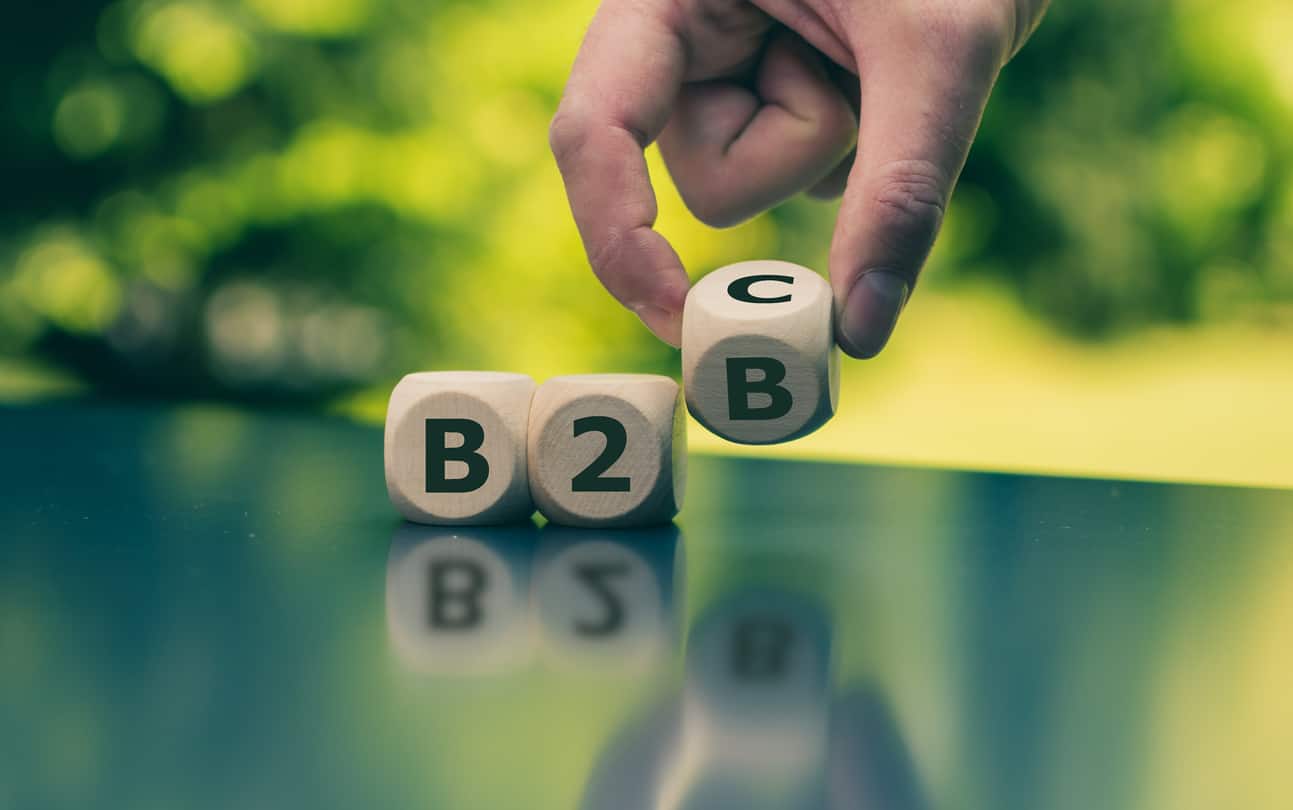What is B2B and B2C? How different are they really? B2B and B2C do overlap in some areas but in others, they really don’t.
Understanding where they fit together and where they don’t is crucial for marketing strategy and messaging, especially as your business moves forward in 2023.
With that in mind, let’s talk about where these two markets intersect and where they go their separate ways.
The Overlap Between B2B Marketing and B2C Marketing
Most of the similarities we outline here won’t be all that surprising. Many businesses engage in both B2B and B2C markets simultaneously. First, we’ll focus on the intersection of the strategy and tactics side of B2B and B2C marketing.
It’s about people.
Both strategies market to real people who are dealing with emotions and problems. It’s easy to see B2B prospects as soul-less, purely rational beings somehow separate from us.
The B2B and B2C customer wants to know they can trust your company, product, and service. Speak to that and establish credibility.
Many marketers discount the element of emotion in B2B because of the intellectual nature of the space. Emotion plays a key role in both markets (more on that in next section.)
It doesn’t matter if your target audience is a six-year-old buying a yo-yo or a CEO of an e-commerce company buying a brand-new integration software. Feelings will influence their decisions. That’s just human nature.
It’s about understanding motives.
Both B2B and B2C customers need both emotional and rational reasons to consider your offerings. This combines the emotional element we detailed above with the critical-thinking side of consumer psychology.
People want to buy something (emotion), and they need to be able to rationally defend the purchase to themselves or others (rational).
Avoiding buyer’s remorse may not be a stated priority, but it is implicit. They want to feel satisfied smart and gain approval for their purchases.
Don’t sleep on communicating value to your customer’s head and heart.
It’s about problem-solving
Everybody’s got problems. Marketing in B2B and B2C should be about targeting those specific problems and providing solutions. This is where buyer personas, buyer groups, and the customer journey come in.
These concepts are valuable in B2B and B2C marketing. They will help your business or company understand your customer’s pain points and needs.
There are a variety of tools to help you work through these concepts; at New North, we recommend tools like Hubspot’s Buyer Persona questions, the Storybrand framework, and the Empathy Map. Basically, these are scripted questions or narrative formats that help you to identify pain points and the true value in your service or product.
After discussing the crossover of these two markets, let’s move to examine the nitty-gritty of their differences.
The Differences Between B2B Marketing and B2C
Because this and B2B blog is written for a B2B company, the differences listed below are heavily focused on B2B and how it departs from B2C.
You are interacting with groups, not individuals.
B2B customers typically make decisions in buyer groups. Speaking to the needs of one person shouldn’t be your focus. Instead, craft your strategy to connect with a decision-making team.
This team will have to justify and explain the logic of the purchase to others in the group. That could range from a single employee explaining the purchase of a HubSpot upgrade to a small group of digital marketers to a CEO explaining the purchase of an IT assessment management system to the executive team.
With that in mind, marketers need to give potential buyers the tools they need to explain the purchases. This can be accomplished through detailed feature pages on a website or extensive price comparisons between your services and your competitor’s offerings.
Bottom line: in B2B, many people are a part of getting to purpose, not just a single individual.
You are committing to for the long-term.
In the B2B space, purchases are typically higher consideration, meaning they have a longer buying cycle. Some offerings can have buying cycles of over a year. Marketers need to take this into consideration. Open communication and steady attention are required to facilitate your customer’s journey as they progress through the marketing funnel.
Your content should be in-depth.
Messaging is important for any marketing strategy, but in B2B, the customer is looking for meat, not fluff. Especially as they travel further down the marketing funnel, they need to gain a deeper understanding of the offering.
They are also looking for more complex data and educational content instead of the easy reading popular amongst B2C buyers.
Examples of this content include industry whitepapers, product guides, one-pagers, and free demos.
Offer content that captures their attention and focuses on their needs.
Check out our NN peak video for some high-view tips on B2B messaging.
Want help with B2B marketing?
Hopefully, this article has given you a better handle on B2B, B2C, and the spaces between them.
Don’t be intimidated by the acronyms – at the end of the day, both markets can be navigated with the right approach. We are a little partial to B2B, though.
After all, B2B tech marketing is our area of expertise at New North.If you’d like a free review of your current B2B marketing efforts – and a path forward based on expertise – get in touch with us today



